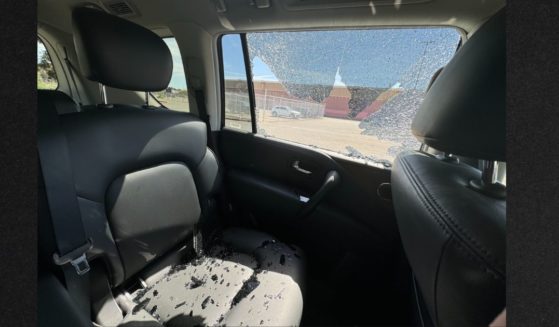Get the latest news delivered right to your email.
2024 Election
Top Stories
Advertisement
The Left Is Wrong: Trans Suicides Surge Following 'Gender-Affirming' Surgeries, Study Shows
The left loves to claim that "gender-affirming care" saves lives. Here's the reality.
By Isa Ryan
April 19, 2024
Comment
MoreShare
Watch: M. Night Shyamalan Apparently Needs to Put Twists Into Movie Trailers Too Now
M. Night Shyamalan, a film director best known for his plot twists, has included one directly in his latest film's trailer.
By Bryan Chai
April 19, 2024
Comment
MoreShare
USA Uses UN Security Council Veto to Overcome 12-1 Vote - Result Will Enrage Far Left
When Biden does the right thing in supporting Israel, you just have to stay tuned for the inevitable flip-flop.
By Jack Gist
April 19, 2024
Comment
MoreShare
Segment on California Violent Crime Goes Off the Rails as Crew Is Targeted by Crooks in Broad Daylight
How much worse can Oakland's crime get, if people get targeted by thieves in broad daylight where they can clearly see the criminals?
By Allison Anton
April 19, 2024
Comment
MoreShare
Quentin Tarantino Changes His Mind About His 10th and Final Film: Report
"Directors don’t get better as they get older. Usually the worst films in their filmography are those last four at the end."
By Bryan Chai
April 19, 2024
Comment
MoreShare
Middle School Girls Take Brave Stand at Track Meet When Adults Force Them to Compete Against Transgender Opponent
It’s tragic that the state of our crumbling society had even put these girls in a position to protest during their own sporting event.
By Johnathan Jones
April 19, 2024
Comment
MoreShare
Biden Shuffles Into a Convenience Store to Pull a Trump-Like Move, Only Proves 45 Is Leagues Ahead of Him
President Joe Biden attempted to mimic former President Donald Trump in a recent convenience-store visit in Pittsburgh, with mixed results.
By Samuel Short
April 18, 2024
Comment
MoreShare
The Biden Administration's Inexplicable Move May Have Just Escalated the Israel-Iran Clash in a Way Both Nations Wanted to Avoid
"[The United States] could have preserved Iran's dignity and avoided escalating the situation on their own."
By Anthony Altomari
April 19, 2024
Comment
MoreShare
Advertisement
The Left Is Wrong: Trans Suicides Surge Following 'Gender-Affirming' Surgeries, Study Shows
The left loves to claim that "gender-affirming care" saves lives. Here's the reality.
Comment
MoreShare
America Celebrates 249 Years of Rebellion Against Tyrants - Why We Must Remember Lexington & Concord
As Ronald Reagan said, there is nowhere left to run. We must restore our founding principles and reignite the American Dream.
Comment
MoreShare
The Left Is Wrong About Negative Human Impact on Climate
The rising level of CO2 in the atmosphere is a natural — not man-made — phenomenon, according to a top scientist.
Comment
MoreShare
Advertisement































